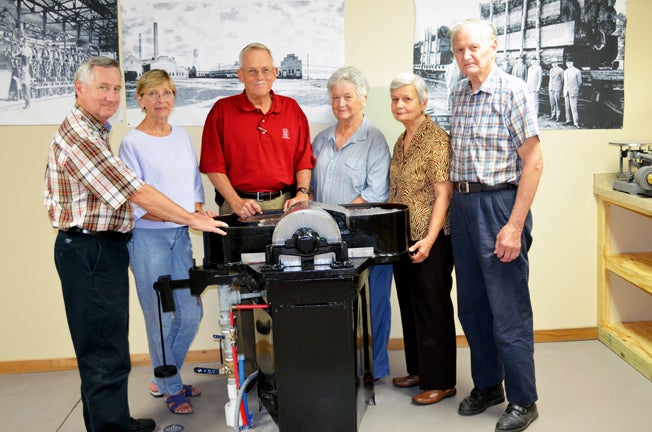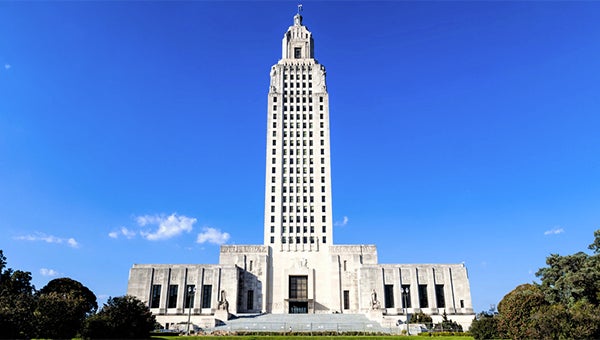Making paper | Cassidy Park Museums planning paper education
Published 6:49 am Wednesday, August 15, 2012
Bogalusa is a paper mill town, born and raised.
But there is a good bet that the majority of the population has no idea what goes on behind the chain link fence and under the stacks in the center of the city. Even folks with family members who have decades of employment at the mill say they haven’t got a clue how wood, or anything for that matter, is turned into paper.
Now the Friends of Cassidy Park Museums are working to provide answers in the new Papermill Classroom at the Pioneer Museum.
Scheduled to open this fall in conjunction with handmade paper making classes and an exhibition of handmade paper art, the classroom has been built and is now being equipped to familiarize visitors with the art, science and history of papermaking.
Curator Jimmie Canter said the project has not been easy. But thanks to a good team that includes retired and current papermill employees, and lots of determination, it’s coming together.
The Friends found a model in the Robert C. Williams Paper Museum at Georgia Tech in Atlanta. The Williams museum was founded and is supported by the American paper industry, including International Paper Company.
“We needed a new classroom and couldn’t find artifacts about the paper mill,” said Canter. “The state said there are no paper making museums in Louisiana.
“The Williams Museum at Georgia Tech was our inspiration. It has a classroom like this, where they do paper making, that is open to the gallery with a window in between.”
The Papermill Classroom is part of a new addition to the historic log cabin museum. Currently, a huge paper wasp nest sits on a counter in recognition of the “earliest papermakers,” and photographs of men in suits and fedoras standing in front of rail cars loaded with what were enormous trees and of other men at work on equally large machinery within the local mill adorn the space.
“We still don’t have many artifacts, three dimensional artifacts, from the paper mill,” Canter said.
“They just went away,” said Ellis Sampson, longtime mill employee and Papermill Classroom team member.
But there is one thing, and it can promote considerable understanding about the papermaking process.
It’s called a Valley Beater and it was donated by Temple-Inland along with $10,000 to the city for the project, said Jim Reeves who recently retired from the mill as maintenance superintendent, who is also vice president of Friends and who installed the piece of equipment.
Joe Ball, also a former Bogalusa papermill employee who retired at the level of superintendent, acted as a consultant. Ball has years of experience running fiber tests on the Valley Beater, a laboratory-sized machine that refines pulp for papermaking.
Wayne Bourn, a retired high-level engineer with the Corps of Engineers is another member of the team that has “contributed many hours and a lot of enthusiasm to the project,” according to Canter.
Students will learn the art of making handmade paper surrounded by the tools of the larger trade.
“As we teach them paper making, they can correlate what they are doing with the machine and the process at the mill,” said Canter. “We want people to understand better what’s going on at the mill.
“Some day we hope to use natural things, like corn, to make paper. You can make a scrap book page out of your son’s old jeans.”
Sonja Rossow, an artist of handmade papermaking and a teacher in the master’s program of the Bookarts Program at the University of Alabama, already came to Bogalusa to advise the Friends team on the equipment and teaching of the art. She will return this fall to teach the first papermaking classes in the new classroom during its grand opening.
“I think this is a great undertaking for the museums to put together,” said Sampson. “Our town needs this. This town is built of wood. The wood products business, paper making, is a part of that.”
The projections of society becoming paperless have far from become a reality. Even in the digital age, the need for paper is increasing.
The Friends of Cassidy Park Museums believe that by allowing visitors to examine paper from its origins to its contemporary interpretation, the new classroom will be a tribute to the rich history, the global presence and the bright future of a product to which the whole world is connected.






